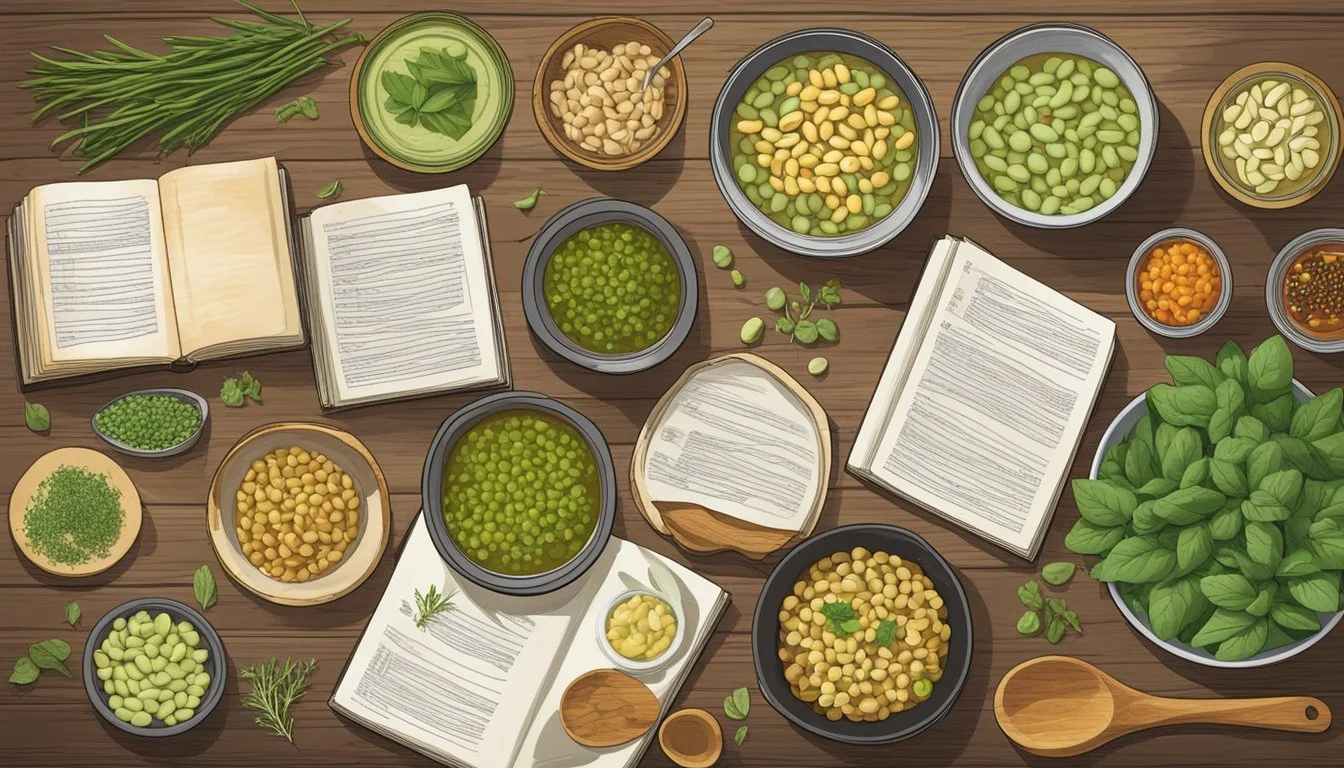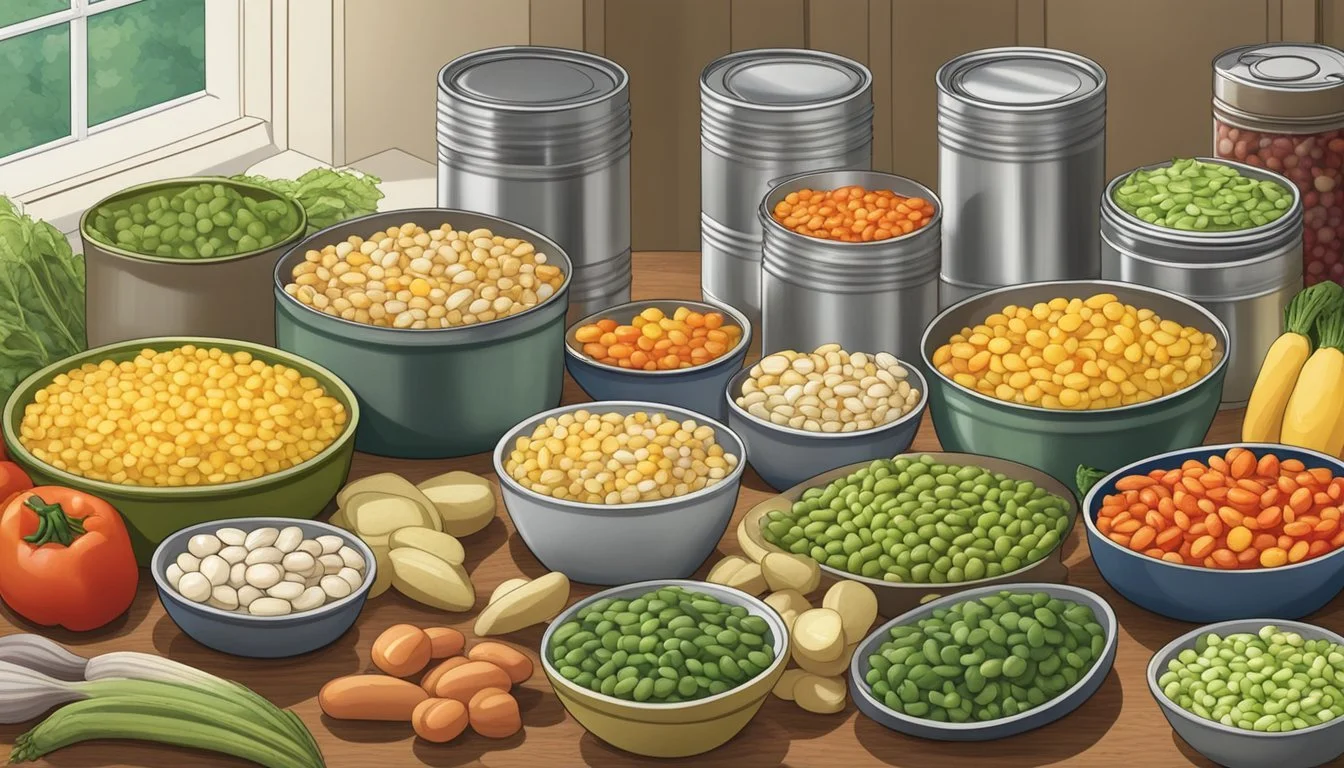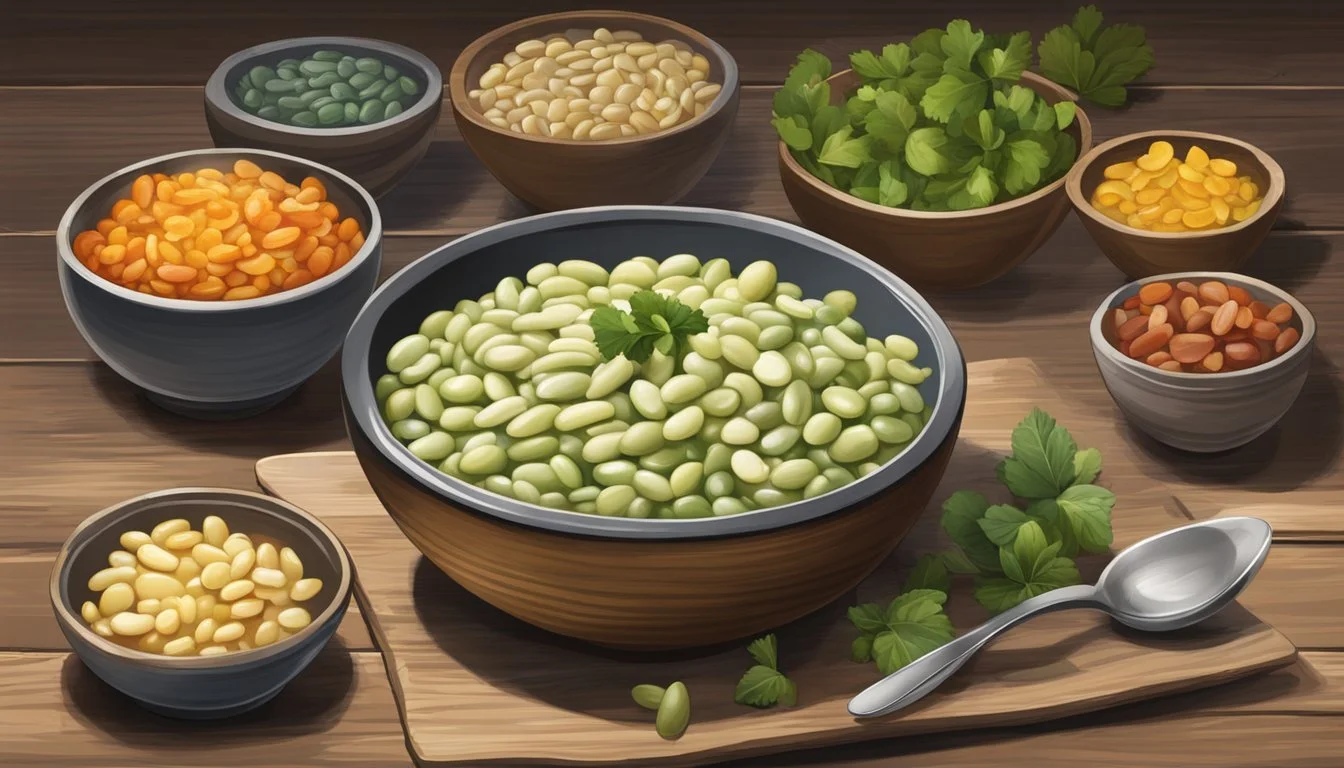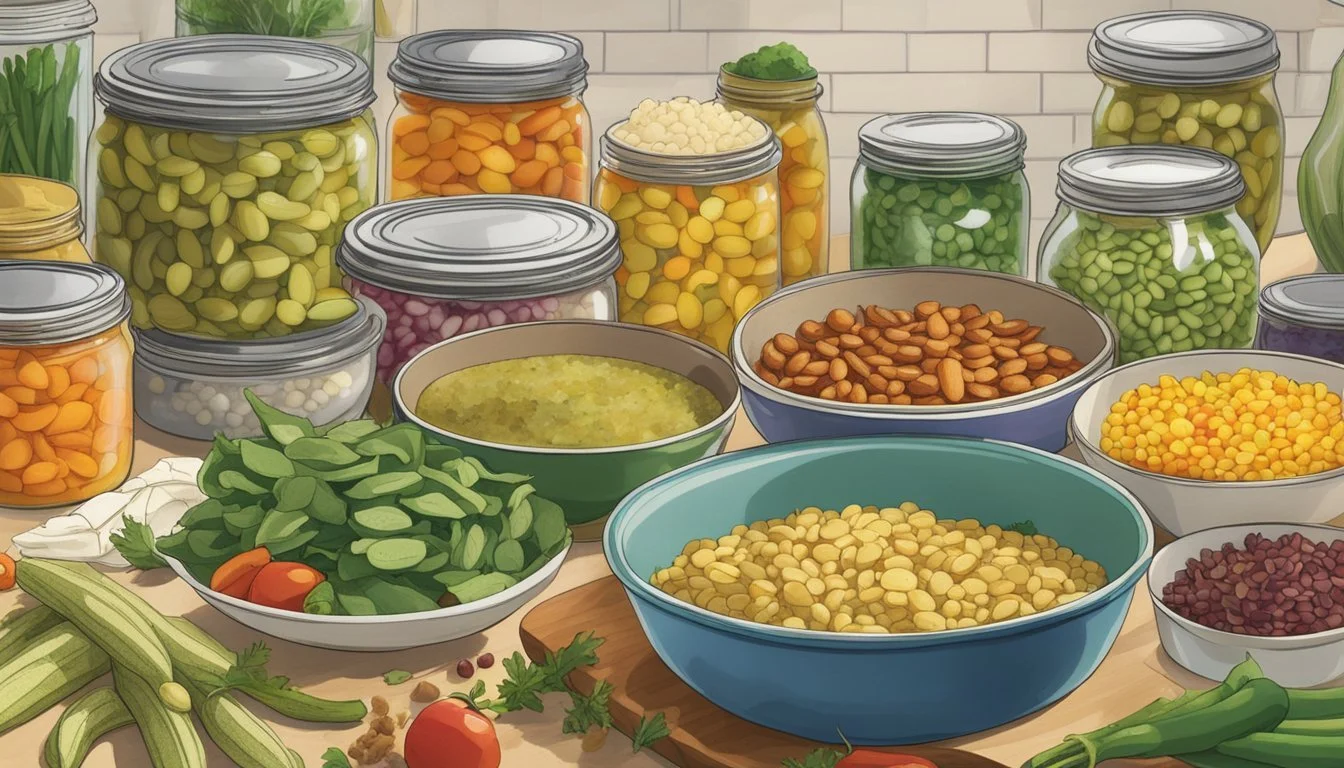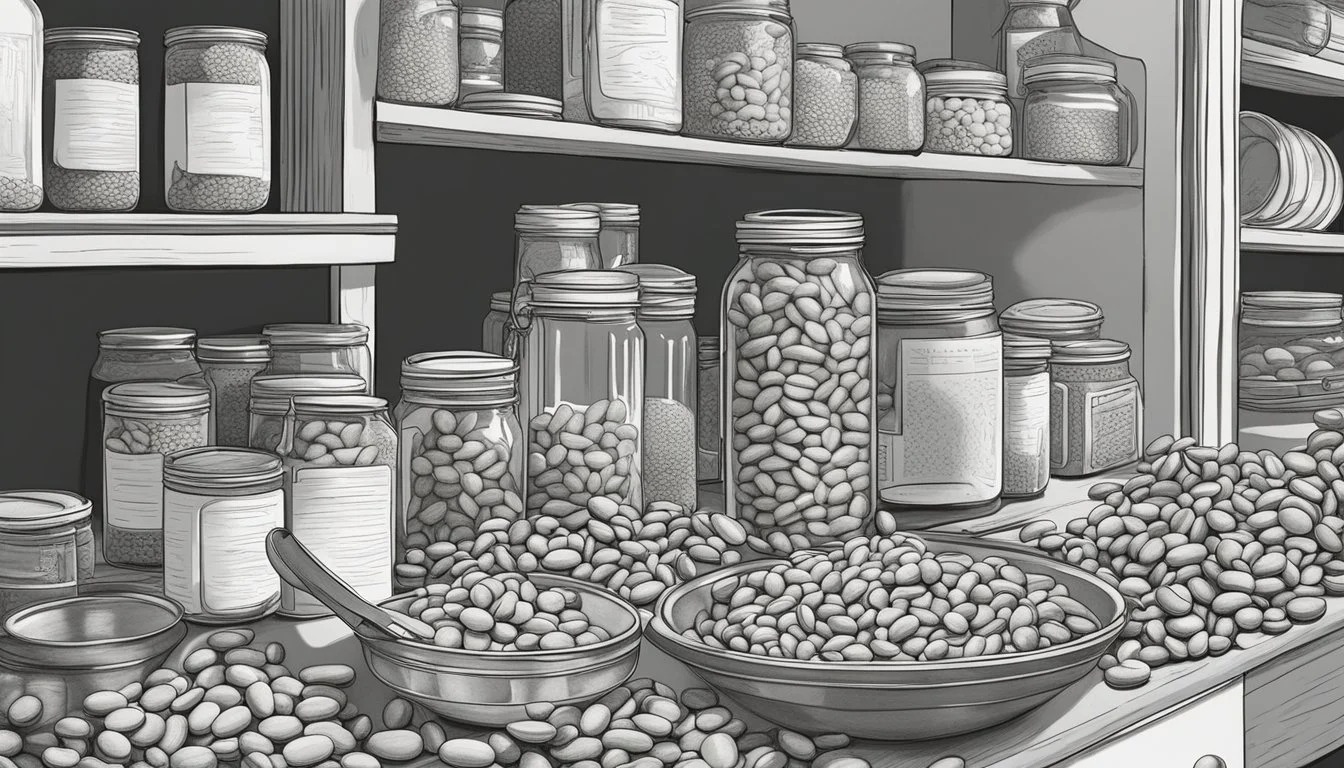Canned Lima Bean Recipes Beyond Succotash
Exploring Creative Culinary Options
Canned lima beans offer a versatile and nutritious option for home cooks looking to expand their culinary repertoire. Rich in protein and essential nutrients, these beans can be the cornerstone of a myriad of dishes that go well beyond the classic succotash. Lima beans provide a hearty base to any meal, infusing dishes with a satisfying texture and a subtle, buttery flavor that complements a wide range of ingredients.
The simplicity of canned lima beans means that they can be easily incorporated into recipes without the lengthy preparation required by their dried counterparts. They are readily available, affordable, and can be stored for an extended period. As a rich plant-based protein source, they are an excellent ingredient for vegetarians and meat-eaters alike, providing a substantial foundation for a variety of recipes. From soups and salads to casseroles and dips, the potential to create nourishing and flavorful meals with canned lima beans is vast.
Besides being packed with protein, lima beans also contain fiber, which promotes digestive health, and other key vitamins and minerals. This nutritional profile makes them a smart choice for those looking to maintain a healthy diet. When utilized in creative ways, canned lima beans can be transformed into dishes that are as nutritious as they are delicious, elevating everyday meals with ease and confidence.
Selecting Quality Canned Lima Beans
When choosing canned lima beans, consumers should give special attention to the labels and expiry dates to ensure they are selecting the freshest, healthiest option available.
Understanding Can Labels
Manufacturers list the ingredients and nutritional content on can labels, which aids consumers in making informed decisions. Typically, canned lima beans contain lima beans, water, and salt. An ideal selection would contain minimal added ingredients, which helps to maintain the beans' natural flavor and nutritional value. It's advisable to look for cans with a low sodium content or no added salt to control salt intake. The nutrition label will provide details on calories, protein, fiber, and other nutrients. The fewer the additional ingredients, the closer the product is to its natural state.
Best Before Dates
The 'Best Before' or 'Use By' dates are crucial indicators of the product's shelf life. Although canned goods have a long storage life due to the canning process, these dates ensure the consumer enjoys the beans at their peak quality. Cans with the following date format are fresh:
Date Code Interpretation MM/DD/YY Month/Day/Year
Choosing canned lima beans with a 'Best Before' date that is as far in the future as possible ensures longer shelf stability and freshness. It is recommended to consume the beans before this date for the best culinary experience.
Essential Ingredients and Substitutions
When crafting dishes with canned lima beans, certain ingredients enhance their flavor, while there are also various substitutions one can consider for protein sources or for those with specific dietary needs.
Common Pairings
Vegetables: Classic vegetables that pair well with lima beans include:
Corn: A staple in succotash, providing sweetness and texture.
Onions: (What wine goes well with onions?) Adds a foundational aromatic flavor to many dishes.
Tomatoes: Often omitted in some recipes, yet can add acidity and freshness when included.
Cauliflower: Can be used as a low-carb alternative in purées or roasts.
Substituting Proteins
Lima beans can be complemented with or substituted for different proteins:
Meat Options:
Bacon: Can add a smoky depth to lima bean dishes.
Other meats: Consider chicken or beef, especially in stews (What wine goes well with stews?) or casseroles.
Tofu: A versatile protein that can be silken for creamy dishes or firm for added texture.
Fava Beans: A close substitute for lima beans with a similar creamy texture and flavor.
Herbs and Seasonings
The right selection of seasonings can elevate the taste of lima beans:
Herbs:
Basil, parsley, or cilantro for a fresh, herbal note.
Rosemary or thyme for a deeper, earthy flavor.
Seasonings:
Salt and pepper: Fundamental for enhancing natural bean flavors.
Butter: Often used to sauté or finish dishes for richness.
Preparation Techniques
In this section, they'll explore how to effectively prepare canned lima beans, ensuring optimal flavor and texture for a variety of dishes.
Rinsing and Draining
To start, one should always rinse and drain the canned lima beans. This process helps to remove excess sodium and any canning liquid, which can affect the taste. They should open the can, pour off the liquid, and rinse the beans under cold water.
Beans Boiling Tips
When ready to boil, they need to place the beans in a pot and cover them with water or broth, opting for the latter for more flavor. To maintain firmness and texture, they should bring the liquid to a quick simmer rather than a rigorous boil, then reduce the heat. A rule of thumb is to use 1 cup of liquid for every 2 cups of beans.
Sauteing Vegetables
Sauteed vegetables add layers of flavor to lima bean recipes. They should heat oil in a pan and add finely chopped onions, garlic, and bell pepper. The vegetables should be sautéed until they're soft and fragrant, creating a flavorful base that will elevate the overall dish. They must be careful not to overcook the vegetables to prevent them from becoming mushy.
Traditional Lima Bean Recipes
The traditional Lima bean recipes that follow offer comforting and familiar flavors, presenting the humble bean in beloved and time-honored dishes.
Classic Succotash
Succotash is a quintessential Southern side dish that typically combines corn and lima beans with a mix of other vegetables. For a classic rendition, one starts with a base of diced onion sautéed in a skillet until translucent. Fresh or frozen lima beans and corn are then added to the mix and cooked until tender. The beauty of this dish lies in its simplicity and the natural sweetness of the vegetables. A traditional succotash recipe may include:
Ingredients:
1 cup diced onion
2 cups corn kernels
2 cups lima beans
Salt and pepper to taste
Optional: diced bell peppers (What wine goes well with bell peppers?) or tomatoes
Method:
Sauté the onion in butter or oil until soft.
Add the corn and lima beans, cooking until vegetables are tender.
Season with salt and pepper.
Serve warm as a side dish.
Hearty Lima Bean Stew
For those seeking a more robust offering, a hearty Lima bean stew offers a comforting meal. This stew typically features lima beans as its star, slowly simmered in a rich broth until creamy and tender. The process begins with onions and garlic for foundational flavor, followed by the addition of lima beans, and other ingredients like carrots, celery, and sometimes smoked ham for a deeper taste profile. The stew is usually seasoned with herbs such as thyme or bay leaves. Some key steps in preparing the stew include:
Ingredients:
1 cup chopped onion
2 garlic cloves, minced
4 cups vegetable or chicken broth
3 cups lima beans
Diced vegetables (carrot, celery)
Smoked ham (optional)
Herbs (thyme, bay leaves)
Salt and pepper to taste
Method:
Sauté onion and garlic until aromatic.
Add the broth, lima beans, vegetables, smoked ham (if using), and herbs.
Bring to a boil, then reduce heat and simmer until beans are tender.
Season with salt and pepper before serving.
Creative Recipe Variations
Exploring beyond the classic succotash, one can transform canned lima beans into innovative dishes that are both comforting and satisfying. By incorporating ingredients such as eggs, zucchini, and heavy cream into cornbread and pasta, these humble beans become the star of versatile recipes.
Cornbread and Lima Beans
Cornbread and Lima Beans is an inviting twist, where the creamy texture of lima beans complements the rustic nature of cornbread. To start, one should fold the well-drained lima beans into the cornbread batter, mixing gently to maintain the integrity of the beans. Adding shredded zucchini not only provides moisture but also a serving of vegetables, making it a well-rounded option. A simple cornbread recipe could be altered as follows:
1 cup cornmeal
1 cup all-purpose flour
1 tablespoon baking powder
1/2 teaspoon salt
1/4 cup sugar
2 large eggs, beaten
1 cup milk
1/4 cup vegetable oil
1 can lima beans, drained and rinsed
1 cup shredded zucchini
Combine the dry ingredients in one bowl, the wet in another, and then mix together along with the lima beans and zucchini. Bake in a preheated oven at 400°F until golden.
Lima Bean Pasta Dishes
One can effortlessly incorporate canned lima beans into pasta dishes to add protein and fiber. For a rich and creamy dish, they may simmer lima beans in heavy cream, garlic, and a sprinkle of Parmesan until the sauce thickens, before tossing it with their favorite pasta. For a lighter fare, they can sauté the beans with garlic, cherry tomatoes, and a splash of olive oil, serving it over a bed of al dente spaghetti. Here’s a sample list for a creamy pasta dish:
1 can lima beans, drained
2 cloves garlic, minced
1 cup heavy cream
1/2 cup grated Parmesan cheese
Salt and pepper to taste
Your choice of pasta
First, sauté garlic, then add lima beans and heavy cream. Simmer until the mixture thickens, stir in Parmesan cheese, season with salt and pepper, and serve over cooked pasta.
Lima Beans as a Side Dish
Canned lima beans offer convenience without sacrificing nutrition, making them an excellent component for side dishes. They can be transformed into protein-rich salads or combined with various vegetables to create delightful medleys that compliment any main course.
Protein-Packed Salads
In the realm of side dishes, one can utilize canned lima beans to craft salads teeming with protein. They serve as an ideal foundation for gluten-free options and can be easily combined with quinoa, fresh herbs, and a lemon vinaigrette to create a refreshing and satisfying side. Particularly when paired with grilled chicken or fish, these salads not only elevate the protein content but also add a bright, flavorful touch to the meal.
Example Salad Combination:
Lima Beans: 1 can, drained and rinsed
Quinoa: 1 cup cooked
Lemon Juice: 2 tablespoons
Olive Oil: 1 tablespoon
Herbs: Chopped parsley and cilantro
Seasoning: Salt and pepper to taste
Vegetable Medleys
Vegetable side dishes featuring lima beans are versatile and can accompany a variety of main courses such as fried chicken or baked tofu. They can be sautéed with a mix of colorful bell peppers, onions, and garlic to highlight their subtle flavor, providing an array of essential vitamins and fibers. These medleys benefit from the buttery texture of lima beans, and when seasoned properly, they present an appealing side dish to any dinner plate.
Sautéed Vegetable Medley Ingredients:
1 can lima beans, drained
1 red bell pepper, diced
1 yellow bell pepper, diced
1 small onion, chopped
2 cloves garlic, minced
Seasoning: Salt, pepper, and optional spices such as smoked paprika or thyme
Combine the vegetables in a skillet over medium heat, cook until tender, and then stir in the lima beans to heat through. This simple yet flavorful combination showcases the beans' versatility as a substantial addition to the vegetable medley.
Nutritional Information
In this section, the caloric content and fat profile of canned lima beans are detailed, underscoring their contributions to a balanced diet. With a focus on both calories and fats, readers can better appreciate the dietary place of lima beans in health-conscious meal planning.
Calorie Count
One cup of cooked lima beans typically contains about 209 calories. This moderate calorie count integrates well into the daily dietary requirements of most adults. Given their high protein and fiber content, lima beans offer sustainable energy and help in maintaining satiety between meals.
Fat Content and Health Benefits
Lima beans are remarkably low in fat, with a cup containing less than 0.5 grams. The minimal fat in lima beans is primarily polyunsaturated and monounsaturated fats, which are considered beneficial for heart health. Furthermore, the protein and dietary fiber present in lima beans aid in muscle building and digestive health, respectively.
Protein: Essential for muscle repair and growth, lima beans provide about 11.6 grams of protein per cup.
Dietary Fiber: An impressive 13.2 grams of dietary fiber can be found in each cup, promoting digestive regularity and potentially helping to manage cholesterol levels.
Storing and Preserving Lima Beans
Proper storage can maintain the quality and extend the shelf life of lima beans. Below are key methods to safeguard their freshness, whether using a refrigerator for short-term storage or a freezer for extending their lifespan.
Refrigeration Best Practices
When storing cooked lima beans in the refrigerator, they should be placed in an airtight container. It's important to cool the beans promptly before refrigerating to prevent bacterial growth. Lima beans can be safely refrigerated for up to three to five days. For the best quality, follow these steps:
Cool: Allow the beans to cool to room temperature within two hours of cooking.
Transfer: Place the beans in a clean, airtight container.
Refrigerate: Keep the container in the main compartment of the refrigerator, away from the door where temperature fluctuations are common.
Freezing for Longevity
Freezing lima beans is an excellent option for long-term storage, preserving their quality for up to eight to 12 months. To freeze lima beans, one should blanch them first to retain color and texture. Here’s a straightforward guide:
Blanch: Immerse the beans in boiling water for three minutes, then quickly cool them in ice water.
Dry: Pat the beans dry to prevent ice crystal formation.
Arrange: Spread the beans in a single layer on a baking sheet lined with parchment paper.
Freeze: Place the baking sheet in the freezer until the beans are solidly frozen.
Pack: Transfer the frozen beans to airtight containers or freezer bags, label with the date, and store in the freezer.
For optimal freezer organization, consider:
Labeling: Clearly mark containers with the contents and date of freezing.
Portioning: Divide beans into meal-sized portions for easy thawing and cooking.
Frequently Asked Questions
In this section, the reader will find insights into selecting the proper form of lima beans for cooking and addressing common concerns that arise during the cooking process.
Choosing Between Fresh and Canned
When deciding between fresh, frozen, or canned lima beans for a recipe, the reader should consider both convenience and flavor. Fresh lima beans offer the best taste but require the longest preparation time. Frozen lima beans are a good middle ground, as they maintain much of the fresh flavor but are quicker to prepare than fresh beans. Canned lima beans are the most convenient option and are ideal for those short on time. They can be easily substituted in most recipes that call for fresh or frozen lima beans.
Addressing Common Cooking Concerns
Cooking with lima beans may come with some concerns, such as texture, seasoning, and preparation time. For canned lima beans, it's important to drain and rinse them to remove excess sodium and improve taste. When one is concerned about texture, cautious seasoning is crucial. Enhancing flavor might involve adding simple ingredients like salt, pepper, and herbs. For those using dried lima beans, cooking time will be significantly longer, and they require pre-soaking, which can be a downside for some. However, soaking and slow cooking can improve the beans' digestibility and flavor absorption.

